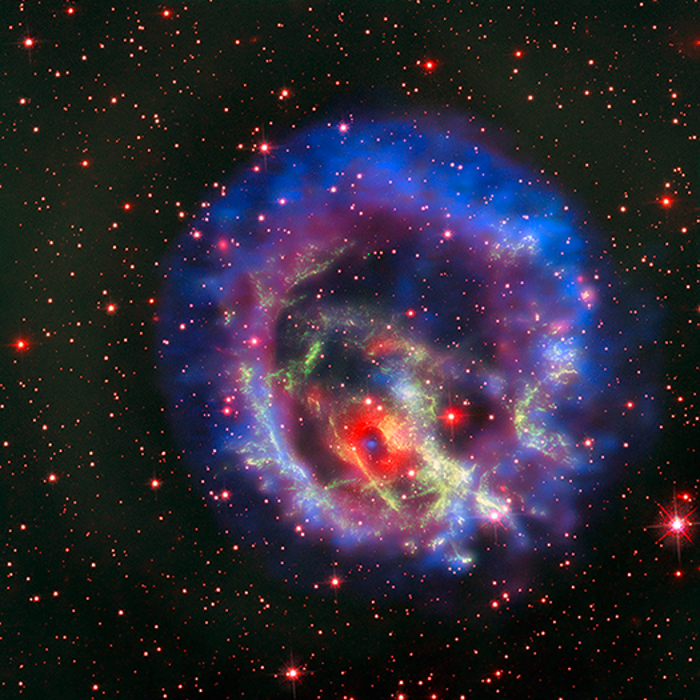
 Credit:X-ray (NASA/CXC/ESO/F.Vogt et al.); Optical (ESO/VLT/MUSE & NASA/STScI)
Credit:X-ray (NASA/CXC/ESO/F.Vogt et al.); Optical (ESO/VLT/MUSE & NASA/STScI)
Bull's Eye
Supernova explosions of high-mass stars produce large remnants of hot shocked gas rich in complex elements like oxygen, neon and iron. These elements are cooked up in the core of the massive star prior to its death, and are expelled into space during the explosion. The image above is a composite X-ray and optical image of a well-studied supernova remnant in the Small Magellanic Cloud, one of the Milky Way's satellite galaxies. The X-ray image is shown in blue and purple and was obtained by the Chandra X-ray Observatory, while the optical image is constructed from observations obtained by the Hubble Space Telescope and by the European Southern Observatory's Very Large Telescope. The VLT is capable of producing images in the light of particular elements, and so can determine how different elements are distributed into space by the stellar explosion. The red ring in the VLT image shows an area of the remnant that's particularly rich in oxygen and neon, two of the elements cooked up inside the progenitor star. Chandra's exquisite spatial resolution shows, at the dead center of this red optical ring, a blue point source of soft X-ray emission. A detailed study of the X-ray emission from this source indicates that this object is an isolated neutron star, the first such identified beyond the Milky Way. Its X-ray emission is produced by its hot surface, which must have a temperature of over a million degrees. It seems likely that this neutron star is the remainder of the collapsed core of the star that exploded. But if so, it's not clear why the neutron star is not near the geometric center of the supernova remnant. Perhaps it was given a swift kick from its place of origin during the explosion?
Published: May 28, 2018
<
HEA Dictionary ● Archive
● Search HEAPOW
● Other Languages
● HEAPOW on Facebook
● Download all Images
● Education ● HEAD
>

Each week the HEASARC
brings you new, exciting and beautiful images from X-ray and Gamma ray
astronomy. Check back each week and be sure to check out the HEAPOW archive!
Page Author: Dr. Michael F. Corcoran
Last modified Monday, 26-Feb-2024 17:21:10 EST


